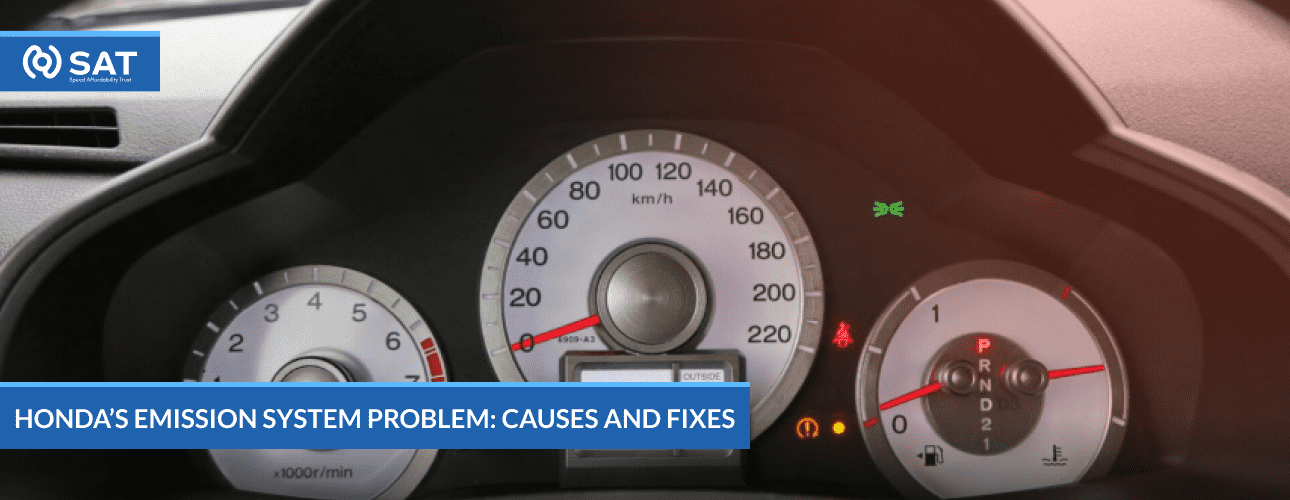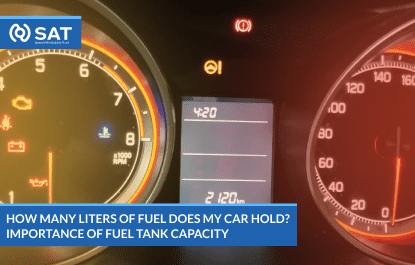
Bridgestone Vs. Michelin Tires – Who’s the Boss
Bridgestone and Michelin are the two industry giants of the tire market.

The emission system problem in Honda vehicles arises from simple catalytic converter problems. The function of Honda’s emission system is to reduce the pollutants emitted into the atmosphere. The issue with the emission system results in an increase in these pollutants.
The manufacturers of Honda updated the Honda Pilot engines and introduced new modes to their emissions.
During low-power demand driving, second-generation Honda Pilots have cylinder-deactivation hardware that allows the engine to shut down one bank of three cylinders, resulting in multiple emission problems.
There can be numerous possible causes behind the emission control system problem. Common issues include bad oxygen sensors, leaking exhaust, faulty cylinder deactivation, bad fuel injection, and faulty catalytic converters. Let’s have a look at some of these in detail.
The role of the oxygen sensor is to monitor the level of oxygen in the exhaust gas. A bad sensor can lead to increased emissions of toxic pollutants.
A defective catalytic converter can lead to an increase in emissions. This happens because the catalytic converter converts harmful exhaust gases into less harmful gases.
Also, the damaged fuel injector can cause the engine to run lean, leading to an increase in emissions.
Damage or a leak in the exhaust system can also cause unfiltered exhaust gases to escape and trigger the warning.
The function of Exhaust Gas Recirculation (EGR) is to control the recirculation of exhaust gases into the intake manifold. The malfunctioning EGR valve can cause emission problems.
It measures the air entering the engine and assists in controlling the air-fuel mixture. Its malfunctioning can lead to emission issues.
The faulty sensor is one of the most dominant causes of emission system problems indicator in the 2017 model Honda Pilot. The oxygen sensor is responsible for controlling the emission of exhaust gases from the engine. If the sensor detects emission to be very high, it will cause the warning light to illuminate.
A catalytic converter and a faulty air-fuel ratio also caused the emission system problems in the 2017 Honda Pilot. Though all these issues can be resolved with simple repair and adjustment, failing to fix the issues can result in more serious problems like engine damage.
The symptoms of emission system problems in the Honda Pilot include poor acceleration, rough idleness, stalling, and hesitating. One of the primary causes of this issue is a faulty catalytic converter.
The catalytic converters convert harmful gases into less harmful gases before releasing them into the atmosphere. An emission system problem arises when toxic gases build up due to an issue in the converter.
The issue with the oxygen sensor is another possible cause of emission system problems in the 2018 – 2020 Honda Pilot models. The oxygen sensor measures the level of oxygen present in the exhaust fumes and passes the information to the vehicle’s computer. In case of malfunctioning, the computer cannot adjust the appropriate air-fuel mixture, leading to an emission system problem.
The last cause of the emission system problem in Honda is the leak in pipes, hoses, and components linked with the exhaust system.
One of the most prevalent emission-related issues in Honda Pilot is catalytic converters issues. If your vehicle has this issue, take it to a professional mechanic immediately. Driving the vehicle with a malfunctioning catalytic converter can cause damage to other parts of the vehicle, leading to a decrease in fuel efficiency. It can also lead to engine failure in some scenarios.
A damaged control injector is another prime cause of emission system problems in the Honda Pilot. The fuel injector might not receive the proper amount of voltage or it might leak. It can cause the engine to run lean, resulting in an illuminating check engine light.
Some of the errors in emission system problems can be fixed easily, while others can only be fixed by trained technicians. Here are some of the guidelines for resolving an emission system error.
If the issue is associated with the sensor or actuator, you can fix it easily by replacing it. The engine temperature and oxygen sensors are quite affordable easily accessible. While doing the replacement, it is crucial to reset the Honda Pilot emission check system alert.
It is challenging to resolve the VCM problem due to the limited access to the VCM unit located in the rear cylinder head. To get access to the VCM unit, the intake manifold has to be dismantled completely. Only a professional mechanic can fix the issue efficiently without making a mistake.
Tracing the problem can be difficult if the errors are occurring as a result of a wiring harness issue. The Honda Pilot uses in its wiring harness an environmentally friendly soy-based insulation and if the insulation gets damaged, only professionals can fix the issue.
To deal with potential fuel injectors or problems in the third-generation Honda Pilot, Honda issued a series of service bulletins for Honda Pilot models from 2016-2018. If the vehicle still has the warranty, Honda will cover the expense. Otherwise, the cost of this repair will be at least $500.
If your vehicle is dealing with an emission system problem, but working smoothly, the chances are that it is in its limp-home mode, which can affect its performance and also impair its drivability.
The system will protect the engine if there is an indication of a misfire, but driving with a misfire can cause more damage to the oxygen sensors and catalysts. Therefore, it is best to pull over and consult with a mechanic.
In the third generation Honda Pilot, another complication that arises is the injector failure because it promptly locks the transmission in the third gear and illuminates the instrument cluster with transmission and engine warning lights.

Bridgestone and Michelin are the two industry giants of the tire market.

Considering the recent developments in the world order, oil prices have increased significantly over the last decade. During such times, being well-researched about your car fuel tank and its features can be extremely useful in cost-cutting. Knowing about your car’s fuel capacity may not seem too significant at face value, but such a basic factor […]

Subaru is widely known for being a highly reliable manufacturer of vehicles that are simultaneously safe and stylish. Because of Subaru Models‘ performance and reliability, these vehicles have a loyal fanbase that swears by them. However, there are some limitations with their boxer engine, and one of the faults in some Subaru vehicles is the […]